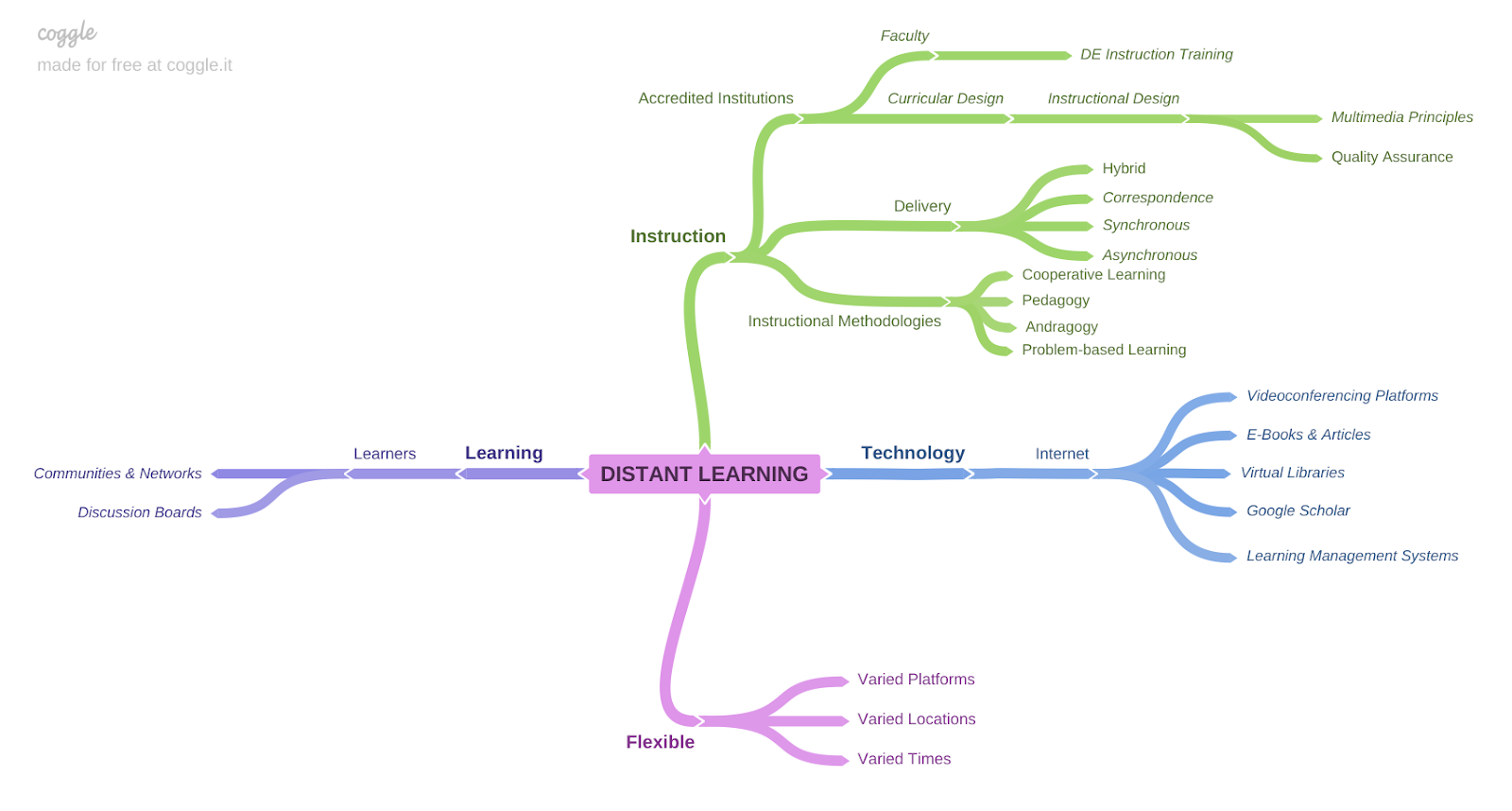The Evolution of Distant Learning
And just like that … I’m back! Welcome to the Arrant Artificer, a space intended to explore instructional design through constructive and intellectual conversations between novice and seasoned ID professionals. Over the next several weeks, conversations will focus on the topic of distance learning – what it is, its influences, drivers of its evolution, and its role within the field of instructional design.
The definition with which I enter
the conversation surrounding the concept of distant learning is that it broadly
encompasses the delivery of instruction for learning to occur in varying geographic
spaces, at varying times, and in diverse ways that allow the learner flexibility
in when, where, and how they learn. A review of resources finds that perceptions
of distance often emerge from perspectives rooted in the professional domain (Simonson
et al., 2019). The resources offer a more universal definition that distinguishes
distant learning as the formal delivery of academic-based, accredited
instruction that is facilitated by an instructor and incorporates interactive
student engagement as required aspects of distant learning (Simonson et al.,
2019). The mind map presented below offers a visual grasp of distant learning.
Distant learning progressed from
its origins of postal correspondence in the 1830s (Simonson et al., 2019) to the
capability for the virtually synchronal instruction that is available and
expected in the 21st Century. The evolution of distant learning is
driven by technological advancements and supported by the emergence of theoretical
frameworks and principles that promote cognitive processing (Mayer, 2014). The
interactive nature of distant learning of today that occurs among learners and faculty
are commonly supported by the vast, worldwide connection of computers that is
the internet. Learners are able to virtually access libraries, classrooms, electronic
books and articles. Use of the internet, video conferencing capabilities, and supporting
software allows for the delivery of instruction to more people located in more
places (Bingham et al., 1996) shifts how instruction is accessed, resources are
retrieved, and learning occurs. These shifts in the academic paradigm logically
influence shifts in how distant learning has been defined over time.
The approximate 400 percent
increase in distant education enrollments in higher within a five-year period
(Laureate Education, LLC, n.d.) is a strong indicator of the popularity of the delivery
medium. The popularity of distant learning extends beyond the domain of higher
education. The conveniences of time, location, and other flexibilities granted
by distant learning have been embraced as a solution for instruction and
learning by various corporate, governmental, and academic sectors at every
level (Moller et al., 2008). Returns on investment have also been realized
through the implementation of distant delivery of instruction. Economic
benefits are achieved through the minimization of personnel needed to facilitate
instructional delivery (Moller et al., 2008). As an example, recent discussions
with a college compliance officer unearthed the realization that smaller
colleges are offsetting budgetary impacts associated with decreased student enrollments
by including distant education instruction to the course loads of faculty thereby
maximizing the use of faculty resources and addressing faculty shortages (M. Gillespie,
personal communication, May 12, 2022). These benefits are fundamental advantages
that education over distance contributes to organizational instruction, training,
and learning. The potential, however, is much greater.
The emergence of companies that
support the global design of courses that are intentionally devised and
delivered to nurture the expansion of knowledge and cognitive growth of
learners offers standardization of digital education. These companies strive
to institute a comprehensive quality assurance system as an essential aspect for
establishing and sustaining the excellence of programs, institutions, and systems
for the delivery of resilient distant education (Kirkpatrick, 2005).
Standardization suggests a broadened potential for the future of the medium
across academic domains and beyond.
As technology continues to advance, distant education will continue to evolve and mature to meet the needs of an evolving society. With the establishment of benchmarks for standardized quality assurance, the design and delivery of methods, materials, and outcomes of digitized instruction and learning become more demonstrable, evaluative, and sustainable. The potential of global standardization can be envisioned as a supporting contributor to the development of a unified, cohesive K-16 educational system that is truly cohesive and equitable in content and delivery. A unified system could minimize the competitive, siloed nature of education and comprehensively realign the focus of instruction and learning for the creation of a more authentic, student-centered, learning experience.
Distant Learning Mind Map
References
Bingham, J., Davis, T., &
Moore, C. (2006). Emerging Technologies in Distance Learning. Horizon
Site. Retrieved May 10, 2022, from
http://horizon.unc.edu/projects/issues/papers/Distance_Learning.html
Kirkpatrick, D. (2005). Quality assurance in open and
distance learning.
Laureate Education
(Producer). (2010). Multimedia learning theory [Video file]. Baltimore,
MD. Author.
Mayer, R. E. (2014). The Cambridge handbook
of multimedia learning. New York:
University of Cambridge.
Moller, L.,
Foshay, W., & Huett, J. (2008). The evolution of distance education:
Implications for instructional design on the potential of the web (Part 1:
Training and development). Tech Trends, 52(3), 70-75.
Simonson, M., Zvacek,
S., & Smaldino, S. (2019). Teaching and learning at a distance:
Foundations of distance education (7th
ed.). Information Age Publishing.



Comments
Post a Comment